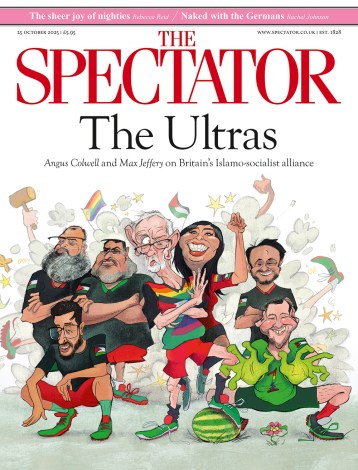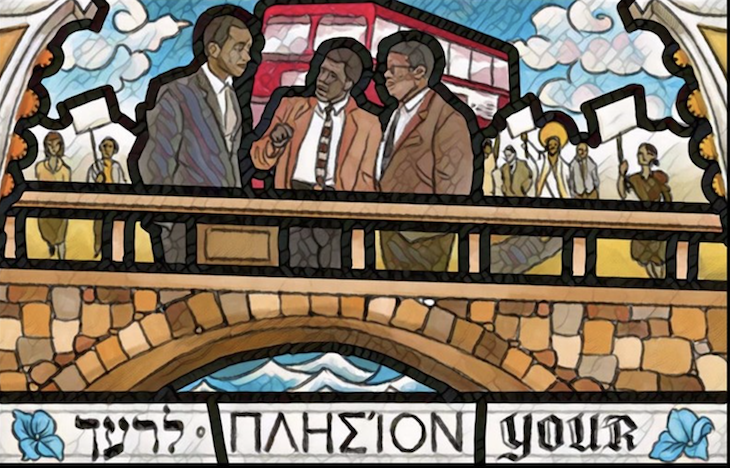St Mary Redcliffe church, in Bristol, has removed four stained-glass windows dedicated to the slave trader Edward Colston, he whose statue was recently toppled and sunk. So far, so good. It is set to replace them with four new images of Jesus. Sort of. Most of them are not exactly images of Jesus, but modern scenes in which he is present, identified by a halo. In one, he is a child on an overloaded migrant dinghy. In another, he is hanging out in Bristol with some multicultural neighbours. In another, he is joining a racial justice protest – Bristol’s famous 1963 bus boycott. The fourth is more traditional: he is on a ship calming the storm.
Depicting Jesus in a modern setting is not necessarily a bad idea, but it’s risky, and one of these windows gets it a bit wrong. In fact, the use of modern settings is something that Christian art has always done: the average Renaissance painting features clothes and architecture from around 1500. The practice is heightened in the Mystery Play tradition: Jesus is imagined as a resident of modern York, or wherever. Recent passion plays show him eating fast food, being paraded in an orange jump-suit and so on. Fine by me; more than fine. It’s an important way of showing how the story relates to our world.
It’s the window depicting Jesus as a protestor that I have a problem with
The problem comes when the traditional stories are elbowed aside, and Jesus is depicted as participating in a different story. There’s a hint of this in the first two scenes I have mentioned. But in fact Jesus was briefly a refugee from Herod, so this is a valid re-imagining of that event. I’m less keen on Jesus the Bristolian next-door. For he is marginal to the group, so the scene is really a celebration of trendy modern neighbourliness, in which he happens to be present, in a low-key way. But I can’t quite muster a theological objection to it.
It’s the window depicting Jesus as a protestor that I have a problem with. For here, Jesus is roped in to a story that is not about him. You could say that he is sort of involved in every human drama, especially in struggles for justice. Sure, but one should think twice about depicting him in any of these other stories, for one is likely to limit him, box him in, make him subservient to other narratives. For example, if he was around in the 1930s, he surely would have opposed Hitler, but if one imagines this artistically one gets into all sorts of trouble, and one weakens his distinctiveness. To put it bluntly, one has to stick to the stories about him. Put them in a modern setting if you like, but make sure the stories are about him.
The story of the Bristol bus boycott is doubtless full of moral heroism, but it’s not about Jesus. In fact, it diminishes Jesus, in this case literally, making him a figure in a crowd. In the Gospels, Jesus didn’t join crowds, he created them. It’s fundamental to his identity that he is the centre of the story, not a participant in some other story. There’s another issue: protest has an echo of ritual, celebration, festivity, worship. It is dubious to depict Jesus as part of a celebratory scene, unless he is its object.
The artist seems to want to highlight Jesus’ humility: he keeps a low profile when the neighbours have a chat, he mucks in and joins a protest, like any other right-minded citizen. This Jesus sounds like a nice guy. But he doesn’t sound much like the person that Christians worship.







Comments